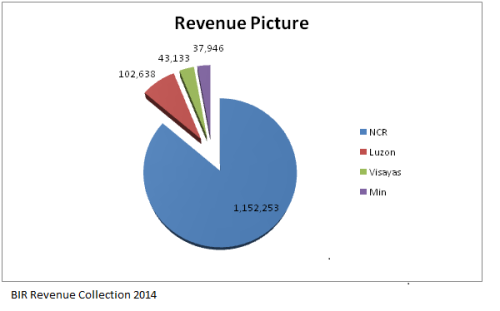There are several suggestions on the number of Federal States to be created. There’s the 1o states and one administrative region, as suggested by CMFP (Citizen Movement for Federal Philippines). Which is similar to the proposal of Sen.Nene Pimentel in Senate Resolution No. 10.
Another proposal is to have 5 Federal States. Luzon, Visayas, Mindanao, BangsaMoro, NCR or the Administrative Capital which is not really an state per se but as capital of the whole country. The suggestion of the incumbent President is to create two separate states for the Bangsa Moro, one for the inland Moros, and another for those in Sulu, Basilan, Tawi-tawi.
Mindanaoans and Bisaya (representing Visayas) are the most vocal advocates of Federalism. Of the ten poorest provinces, two are coming from Visayas (Siquijor, and Northern Samar) while Eastern Samar is at number 11. Eight of the ten poorest provinces are from Mindanao.
If we are to draw a picture of where the national government gets its money the picture below would show how small are the revenues coming from Mindanao.It is also to be noted that one third of Mindanao’s 37,946 billion revenue are from Reg. 11 or the Davao Region (12,423 billion).

(the figures above are in billion pesos)
It should also be remembered that 71,834 billion pesos of Luzon’s revenues are coming from Reg 3 -Central Luzon and Reg 4-CALABARZON. These two regions are close to NCR.
Assuming we are to create three Federal States; namely, the Federal State of Luzon, Federal State of Visayas, and the Federal State of Mindanao, where would these newly created states get their revenue? Can Mindanao develop depending on its 37,046 billion revenue? For an island so big, 37 billion is disproportionately small. In the proposed BBL, the government planned an allocation support of 37 billion per year, an amount our congressmen think are necessary for the Bangsa Moro to develop.
At first view the graph would show how small is the economy of Mindanao. While the graph is telling us of how badly distributed the industry and are in this country, it also tells of a story where taxes are being paid. Most of Philippine business enterprises have HQ’s in NCR.
While those who are against Federalism ask where will the poor regions get the needed revenue, the bigger question should be; where goes the big chunk of our taxes?
